
Weta or Not, to Middle Earth We Go! Day 7
At the base of the north island, Wellington, New Zealand, is the hub for Lord of the Rings film sites! Peter Jackson used its international airport as one selling point for easy access (it flies exclusively between New Zealand and Australia), but the plethora of great sites within and around it, including Weta Workshop and Rivendell make it a must-see for any LotR fan. So let’s get started!
Shortcut to Mushrooms: Mt Victoria Park
Mt Victoria’s steep slopes make it the perfect place for hobbits fleeing angry farmers to fall down a hill! Peter Jackson, famous for saying, “Let’s do it one more time for luck,” made the poor hobbit stunt doubles tumble down the hill 8 times—until Frodo’s unlucky double missed the crash mat and went to the hospital. We tried climbing about 10 feet up the hill and could hardly make it for all the loose pine needles slipping underfoot and gravity’s relentless pull yanking everything out of our hands and pockets!
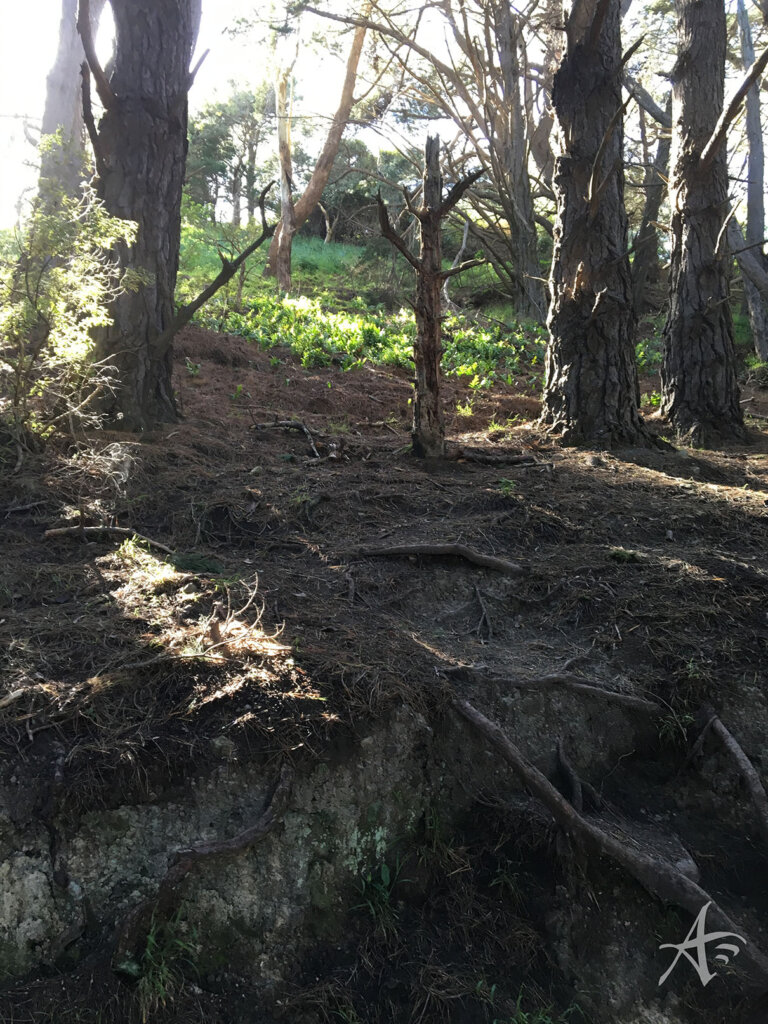
The hobbit actors themselves also dreaded running up and down the steep hill from the Black Rider’s pursuit time and again, particularly poor Sean Astin, playing Sam, who had to rest in the ambulance with some oxygen after being forced to gain 15 kilos in a matter of weeks on a strict KFC and donut diet to gain the proper hobbit sideways stature. At the top of this hill—and yes, I ran as far up it as I could, which wasn’t very far, because it’s a real doozy—where the Black Rider appears, the weather had been so cold that both horse and rider’s breath clouded the air. Seeing as breath coming off a creature neither living or dead wasn’t appropriate, the Rider wore a snorkel to send his breath back down his cloak.

On a nearby path, the hobbits hid from the Rider under an artificial tree stump scaled to make them look very small, but the Rider himself wasn’t there in order to avoid danger to the crew packed on the slippery hillside in case the horse spooked. Plus, the horse and rider had to be enlarged relative to the hobbits.
Farther down the hill in the park is the area where the mustering of the Rohirrim was filmed. All the tents in that scene are round save one—the one sized to cover a gas main!
Though the crew painted their cars like army trucks to avoid detection, their use of smoke effects prompted an inspection from the fire brigade—and so the word got out about the filming! Now there are little markers along the path naming the area as a film site.
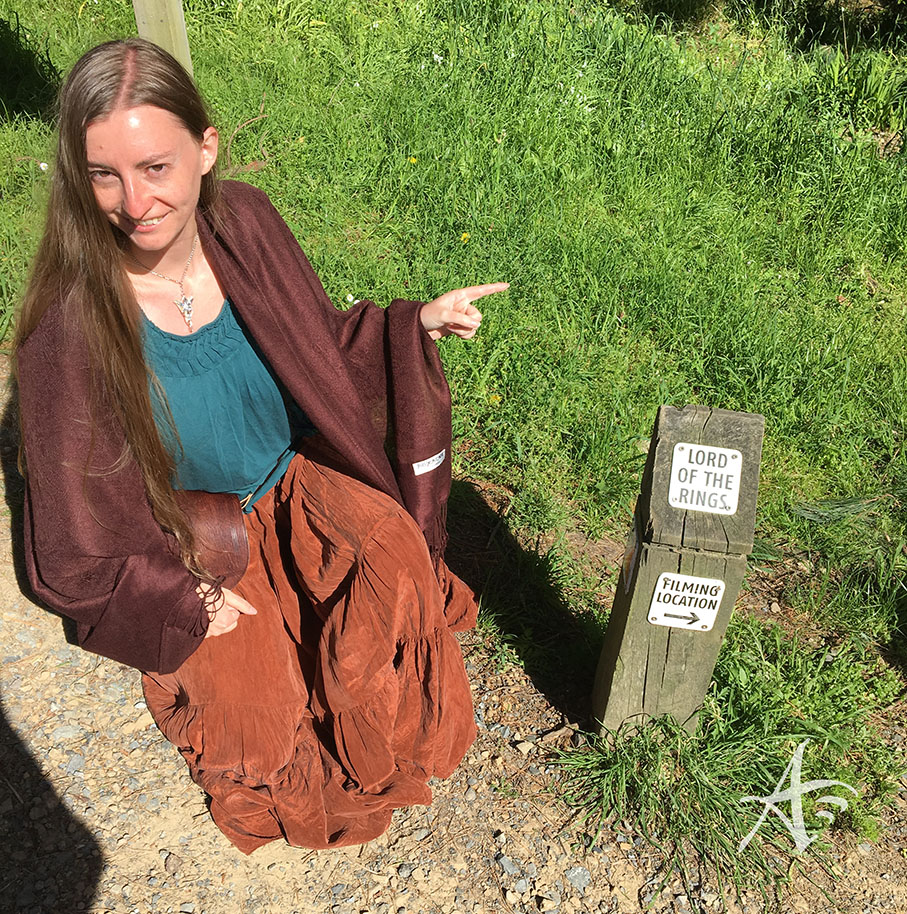
Weta Workshop
Our path took us next to Weta Workshop, which is named for an ugly prehistoric insect since the company started out making a lot of gore and creepy creatures. As of 2016, they’d worked on over 150 films, including The Chronicles of Narnia, Eragon, and The Avengers. Their lobby displays life-size models of Gandalf, Gollum, and a towering 10-foot Azoc the Defiler outside the gallery gates guarded by stone dwarves.
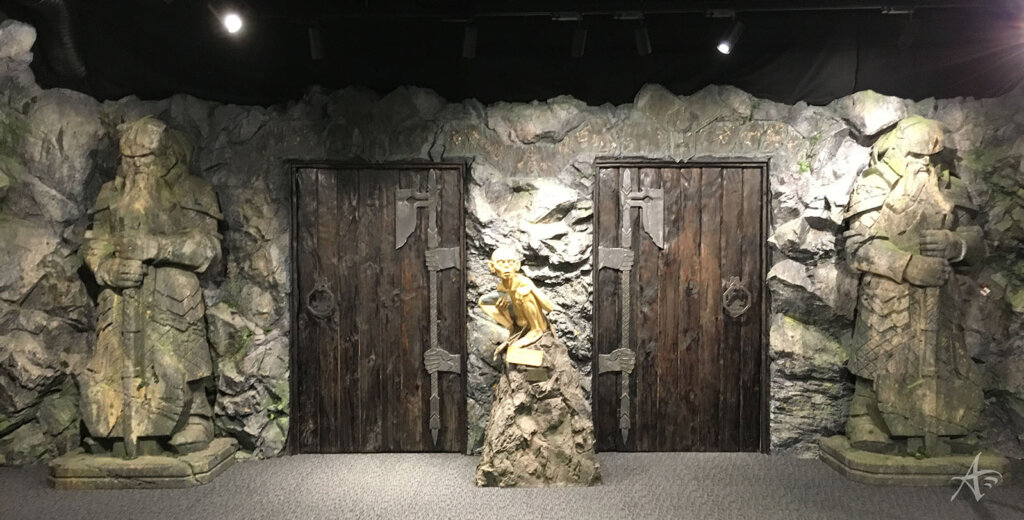
Although a giant in the film industry now, at the time of the Lord of the Rings, Weta didn’t have its own 3-D scanner for 3-D modeling, so they borrowed one from a cattle factory. This meant all their models had to be cow-sized—much bigger than they would have liked!
Unfortunately, due to copyright, we couldn’t take pictures inside the gallery, but I’ll share more of the incredible trivia about what we saw! In addition to digital visual effects, Weta also created a lot of the weaponry and armor on set. For example, a rapier for Prince Caspian was carved, a mold made out of silicone, and then polystyrene poured in to make a harder weapon. Most of the sheathed weapons the actors wore weren’t metal so that they would weigh less; the metal blades were primarily used for unsheathed close-ups. Everything Weta makes looks brand new, and has to be aged with black paint for grease or have aluminum hammered on to make scratches.
Instead of full-metal chain mail, orcs wore woven nylon, which unfortunately shrunk over the course of the shooting, so they had very stiff movements by the end of the film. For Kingdom of Heaven, the chain mail was made of plastic piping, which weighs about a fifth of the amount of metal mail. The black coloring in the orcs’ mouths was made of a mouth wash with food coloring that lasted about 7 minutes, so the orcs had the best breath on set!
Scorch-O-Rama
Our “orc-sized lunch,” as the tour put it, came from the Scorch-O-Rama restaurant, popular with the LotR actors because of its proximity to Peter Jackson’s house. This delightful place proudly displays its support of many fandoms, from Pac-Man to Star Wars. The bartender serves “fizzy lifting drinks,” but I enjoyed Smeagol’s Salmon Benedict—the closest they can come to fish “raw and wriggling” served with “eggses, Precious!”
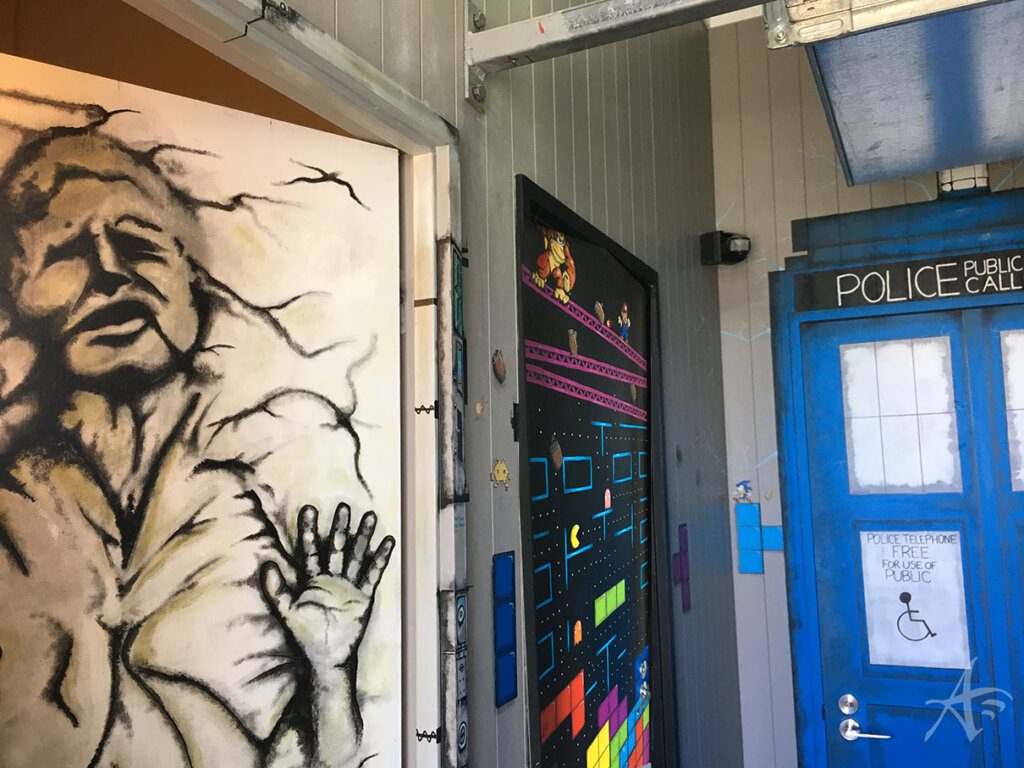
Anduin: Poet’s Park
Not far outside Wellington is Poet’s Park, which features a river where the close-up shots for the Anduin river voyage were taken. The river has a nondescript steep bank on one side to simulate the edge of the gorge while the other bank provides a fairly flat rock access. Some shots were mirror-imaged to look like both sides of the gorge were there. Sean Bean, the actor for Boromir, had a terrible time controlling the stylized but less practical canoe, and had to have two people in an adjacent boat steady him for his shots.

Isengard: Harcourt Park
Our tour took us next to Harcourt Park, where the grounds of Isengard were filmed. Since every site needed to be put back to its pre-filmed state, rather than building a life-sized arched gate for Gandalf to ride through, they actually held up a miniature in front of the camera. However, part of the lawn they pulled up to make the path accidentally was replaced with the wrong type of grass afterward! Ian McKellan, who played Gandalf, refused to ride a horse at any point (an understandable choice), so all his riding was done by stunt doubles.
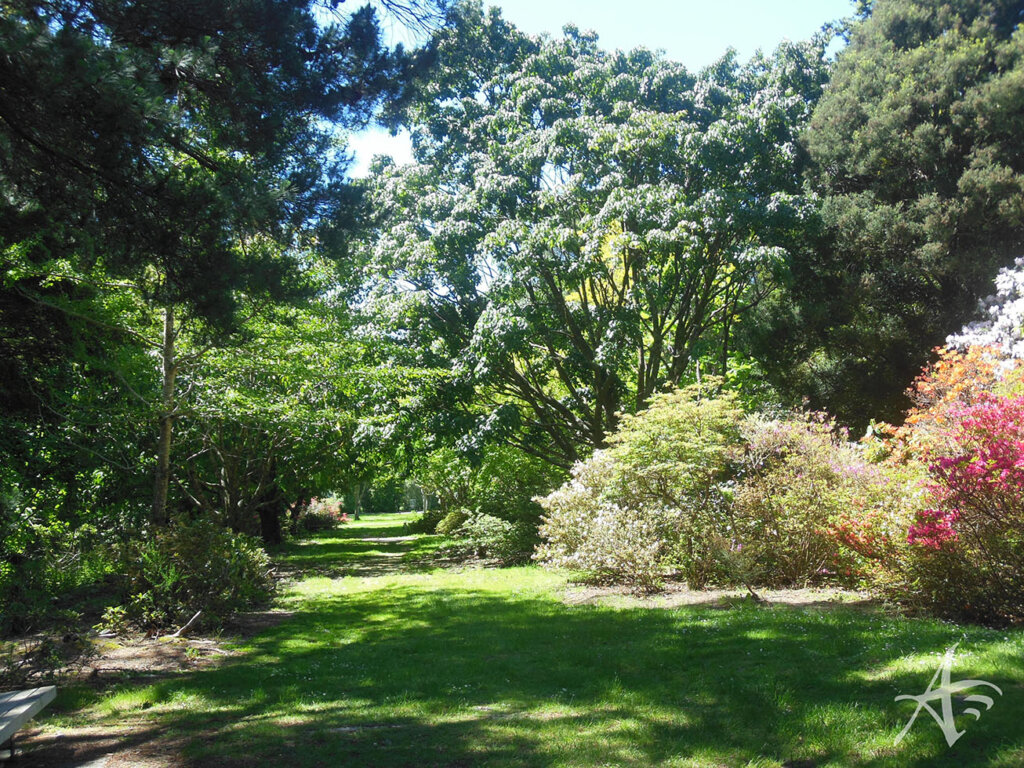
Rivendell: Kaitoke Park
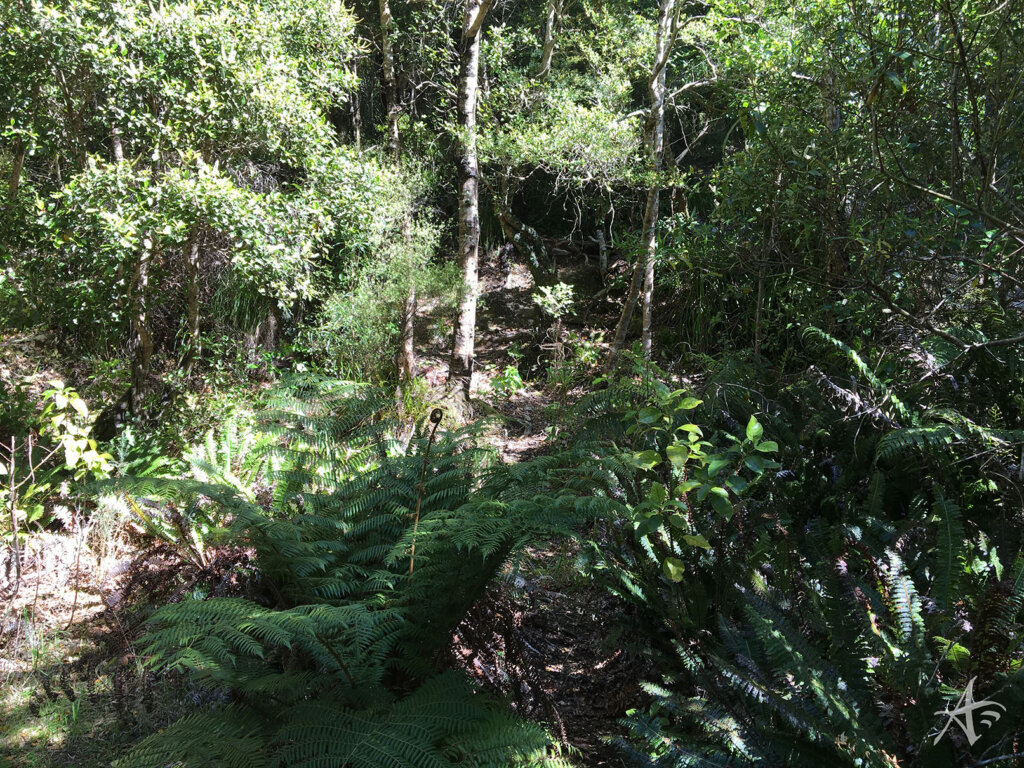
Kaitoke Park is the only site to be renamed after its participation in the Lord of the Rings films: Rivendell. This lush forest with its plethora of ferns exudes the beauty and peace fitting for the home of the elves. A real tree here was used as the headboard in Bilbo’s room. Another tree nearby is where Legolas posed for all his poster shots. Of course, I had to get a picture there in my LotR garb, too!
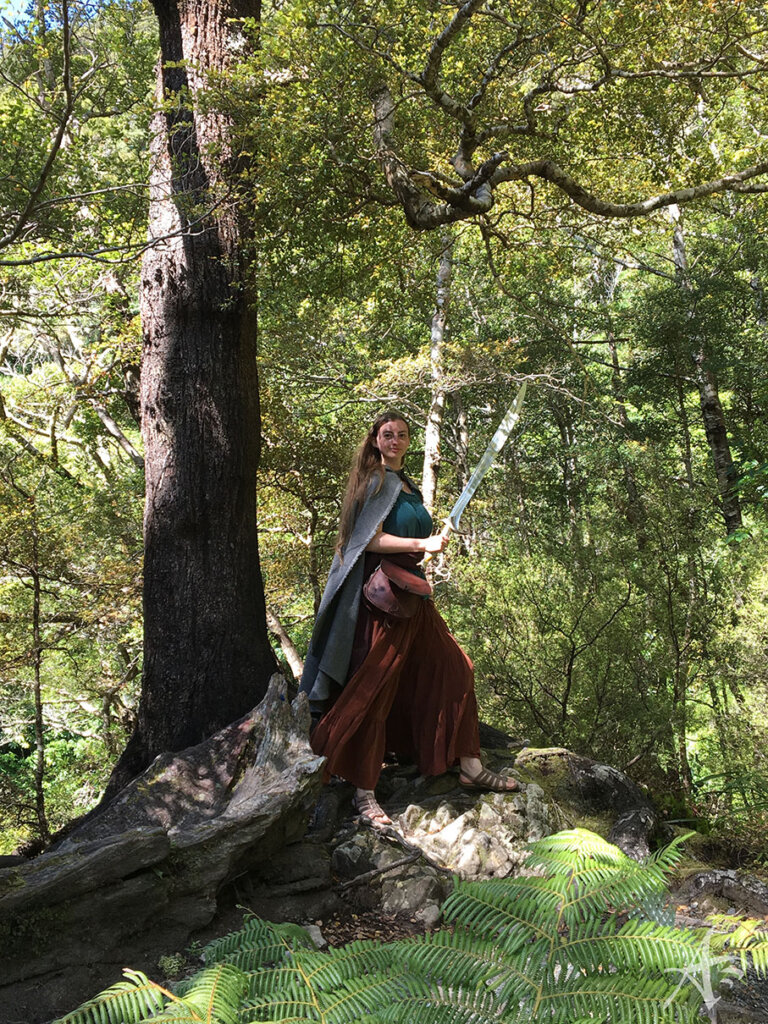
An arch built by Weta Workshop, 2/3 the size of the actual one used in filming, still stands there. The rounded molding in it is actually made of pool noodles!
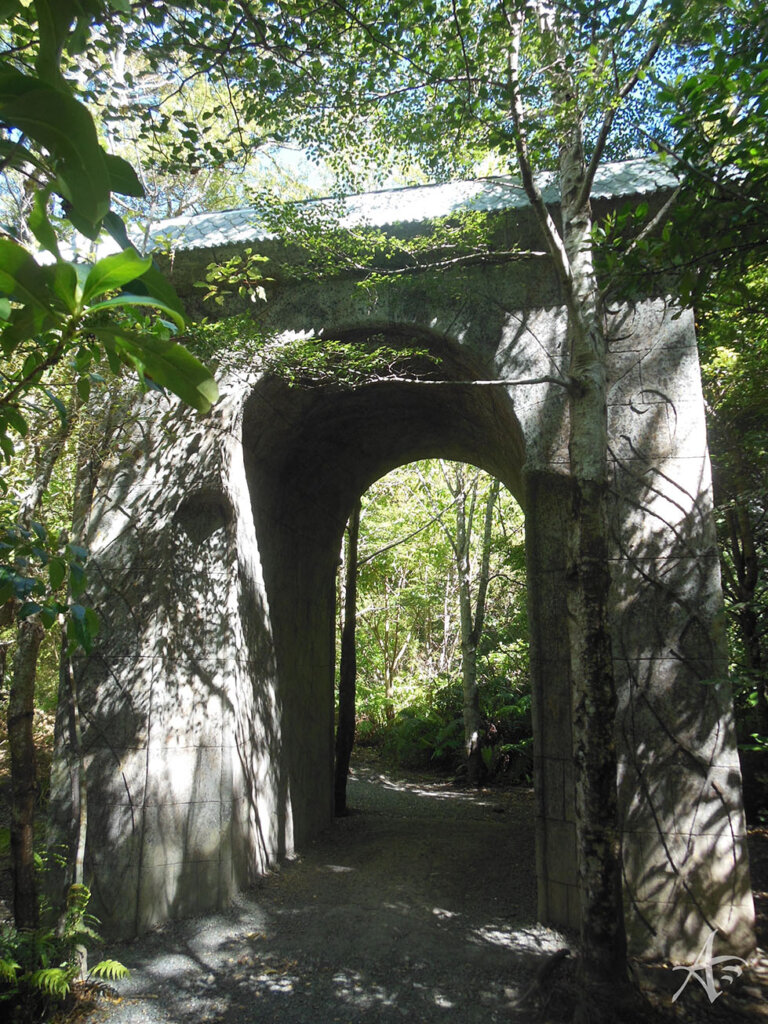
There are multiple other film sites nearby—too many to see in one day—including the quarry used for Helm’s Deep and Minas Tirith as well as Stove Street Studio’s record largest blue screen used for Caradhras (it’s no longer the largest and has since been painted green). But after seeing these idyllic forests and rivers, the next day we would embark on a more dangerous journey. Join us next time as we hazard the Paths of the Dead!
Journey to Middle Earth Series:
Day 1: Living Like Hobbits (Auckland)
Day 2: To Middle Earth and Beyond! (Port Waikato & Hot Water Beach)
Day 3-4: Hobbiton (Matamata)
Day 5: Geothermal Wonderland (Rotorua)
Day 6: The Forests and Rivers of Middle Earth (North Island)
Day 7: Weta Workshop & the Forests of Middle Earth (Wellington)
Day 8: Paths of the Dead (Putangirua Pinnacles)
Day 9: Flight of Fantasy (Wellington & Christchurch)
Day 10: Edoras, Capital of Rohan (Mount Sunday)
Day 11: Lake Pukaki (Laketown)
Days 12-14 part 1: Queenstown (Isengard, Lothlorien, Ithilien, and more!)
Days 12-14 part 2: Queenstown (Argonath, Dimrill Dale, Rohan, and more!)
Please review the Posting Policy before commenting.


